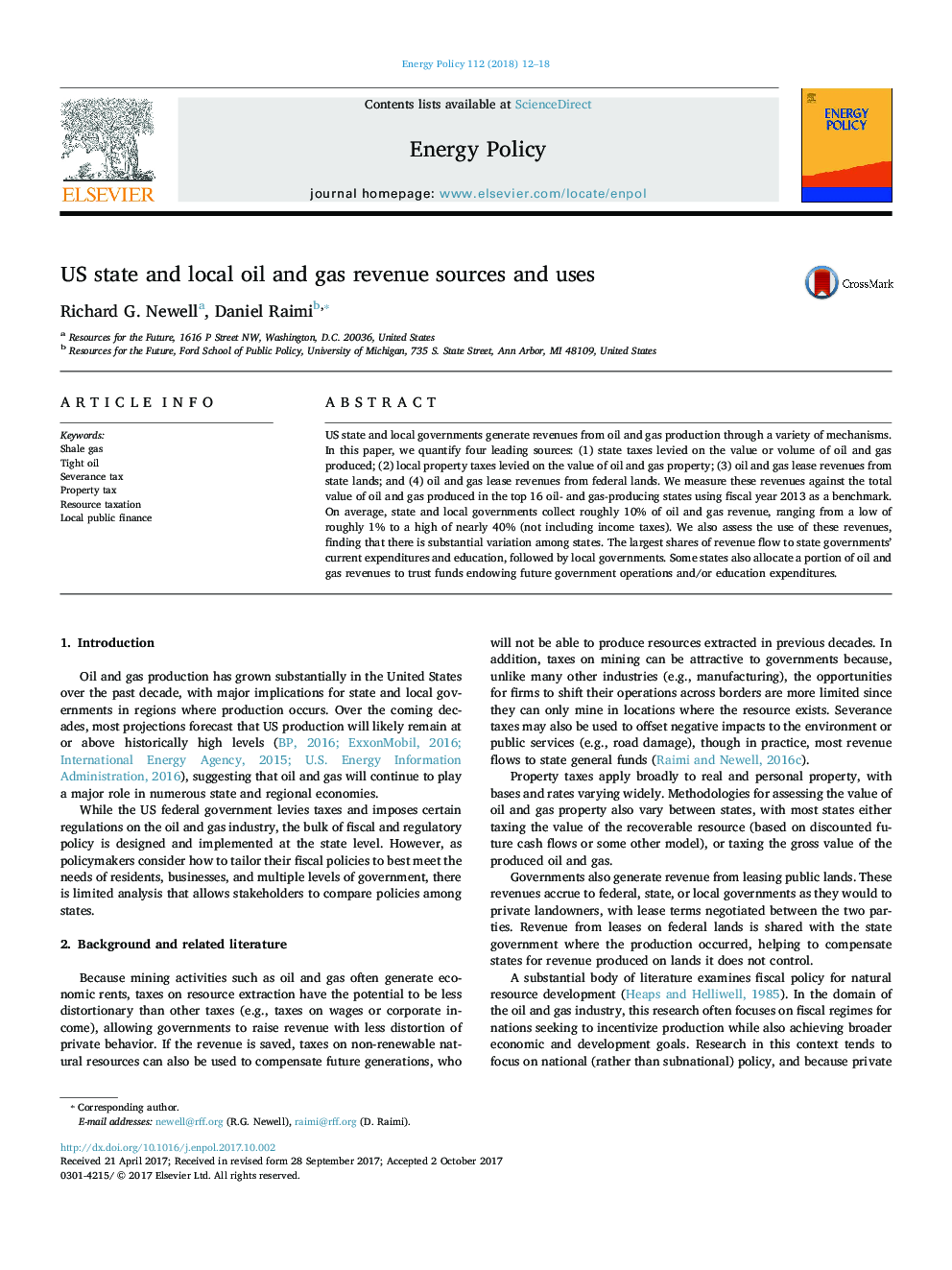| Article ID | Journal | Published Year | Pages | File Type |
|---|---|---|---|---|
| 5105465 | Energy Policy | 2018 | 7 Pages |
Abstract
US state and local governments generate revenues from oil and gas production through a variety of mechanisms. In this paper, we quantify four leading sources: (1) state taxes levied on the value or volume of oil and gas produced; (2) local property taxes levied on the value of oil and gas property; (3) oil and gas lease revenues from state lands; and (4) oil and gas lease revenues from federal lands. We measure these revenues against the total value of oil and gas produced in the top 16 oil- and gas-producing states using fiscal year 2013 as a benchmark. On average, state and local governments collect roughly 10% of oil and gas revenue, ranging from a low of roughly 1% to a high of nearly 40% (not including income taxes). We also assess the use of these revenues, finding that there is substantial variation among states. The largest shares of revenue flow to state governments' current expenditures and education, followed by local governments. Some states also allocate a portion of oil and gas revenues to trust funds endowing future government operations and/or education expenditures.
Related Topics
Physical Sciences and Engineering
Energy
Energy Engineering and Power Technology
Authors
Richard G. Newell, Daniel Raimi,
